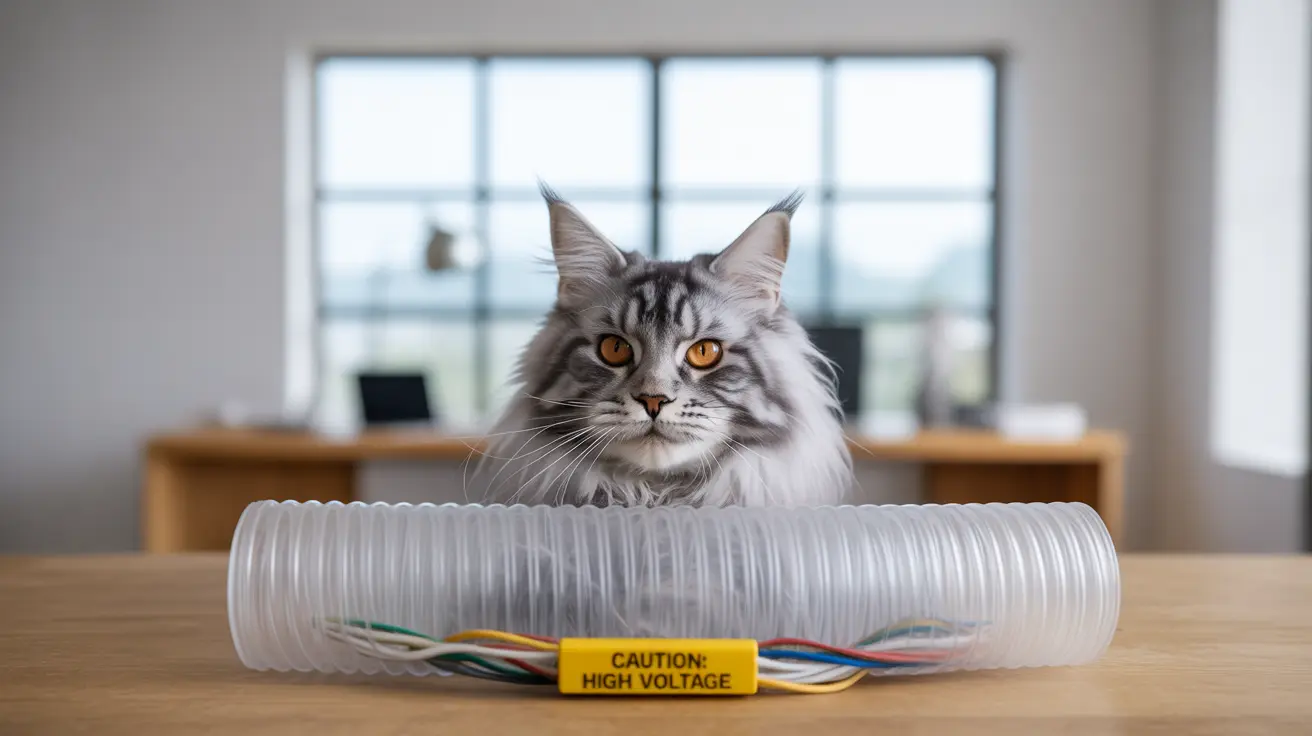Keeping cats safe from electrical wires is a crucial responsibility for every pet owner. These curious creatures are naturally drawn to dangling cords and cables, which can lead to serious injuries or worse if not properly managed. Understanding how to effectively protect your cat from wires could literally save their life.
In this comprehensive guide, we'll explore proven methods to create a wire-safe environment for your feline friend, along with expert tips to prevent dangerous encounters between your cat and household electrical cords.
Understanding the Dangers of Electrical Wires
Electrical wires pose several serious risks to cats, particularly young kittens and juvenile cats under two years old. The most immediate danger is electrocution, which can cause severe burns, cardiac problems, and even death. Even minimal contact with exposed wiring can result in life-threatening injuries.
Cats may also face risks from swallowing wire insulation or developing pulmonary edema (fluid in the lungs) after an electrical shock, which can manifest up to 36 hours after the incident.
Essential Wire-Proofing Strategies
Physical Barriers and Protection
The most effective way to protect your cat from wires is to create physical barriers between them. Consider these proven methods:
- Install cord covers or protective tubing
- Use wire management systems to bundle loose cables
- Place furniture strategically to block access to outlets and cords
- Employ cable ties to keep wires organized and secure
Smart Storage Solutions
Proper storage of electrical items can significantly reduce risks:
- Store unused electronics in closed cabinets
- Keep charging cables in designated areas away from pet access
- Use cord management boxes to hide power strips
- Install wall-mounted cord channels to keep wires off the ground
Behavioral Training and Deterrents
While physical protection is essential, training your cat to avoid wires is equally important:
- Apply pet-safe bitter sprays to discourage chewing
- Provide appropriate chew toys as alternatives
- Use positive reinforcement when cats ignore wires
- Consider motion-activated deterrents in high-risk areas
Creating Safe Zones
Designate specific areas where your cat can play freely without access to dangerous wires:
- Set up cat-specific play areas away from electronics
- Use baby gates to block off areas with numerous cords
- Create elevated spaces where cats can perch safely
- Ensure proper outlet coverage in accessible areas
Emergency Preparedness
Despite best precautions, accidents can happen. Be prepared by:
- Keeping your vet's emergency number readily available
- Learning basic pet first aid
- Installing GFCI outlets in areas accessible to pets
- Having a plan for quick power shutdown if needed
Frequently Asked Questions
What are the main risks if my cat chews on electrical wires?
The primary risks include severe electrical burns, cardiac problems, pulmonary edema, and potential death. Even minor contact with live wires can cause serious internal injuries that may not be immediately visible.
How can I safely cat-proof electrical cords in my home?
Use cord covers, wire management systems, and furniture placement to create barriers. Apply pet-safe bitter sprays, keep cords organized and hidden, and provide alternative toys for entertainment.
What should I do immediately if my cat gets an electric shock from a wire?
First, turn off the power source. Don't touch the cat until electricity is disconnected. Then seek immediate veterinary care, even if your cat appears fine, as internal injuries can develop hours later.
What behavioral methods can help stop my cat from chewing cords?
Use positive reinforcement training, provide appropriate chew toys, apply bitter deterrent sprays, and ensure your cat has plenty of environmental enrichment and playtime to reduce destructive behaviors.
How do I recognize delayed symptoms of electrical injury in cats after cord exposure?
Watch for signs like difficulty breathing, lethargy, loss of appetite, drooling, coughing, or changes in behavior. These symptoms can appear up to 36 hours after exposure and require immediate veterinary attention.
Remember, creating a wire-safe environment for your cat requires ongoing vigilance and regular safety checks. By implementing these protective measures and staying alert to potential hazards, you can help ensure your feline friend stays safe from dangerous electrical wires.






